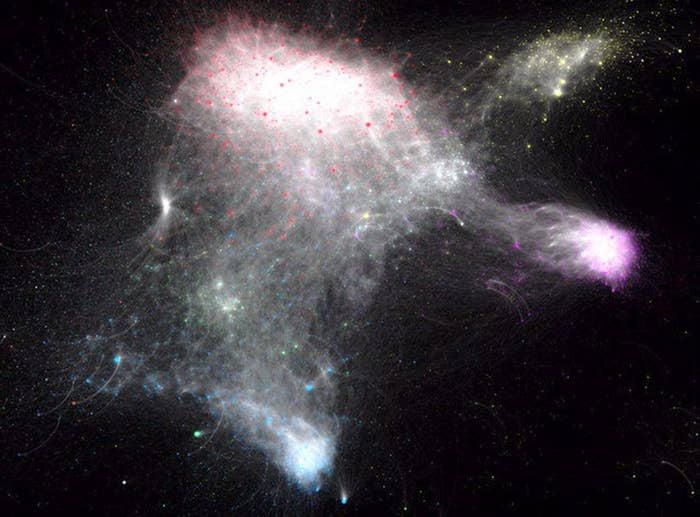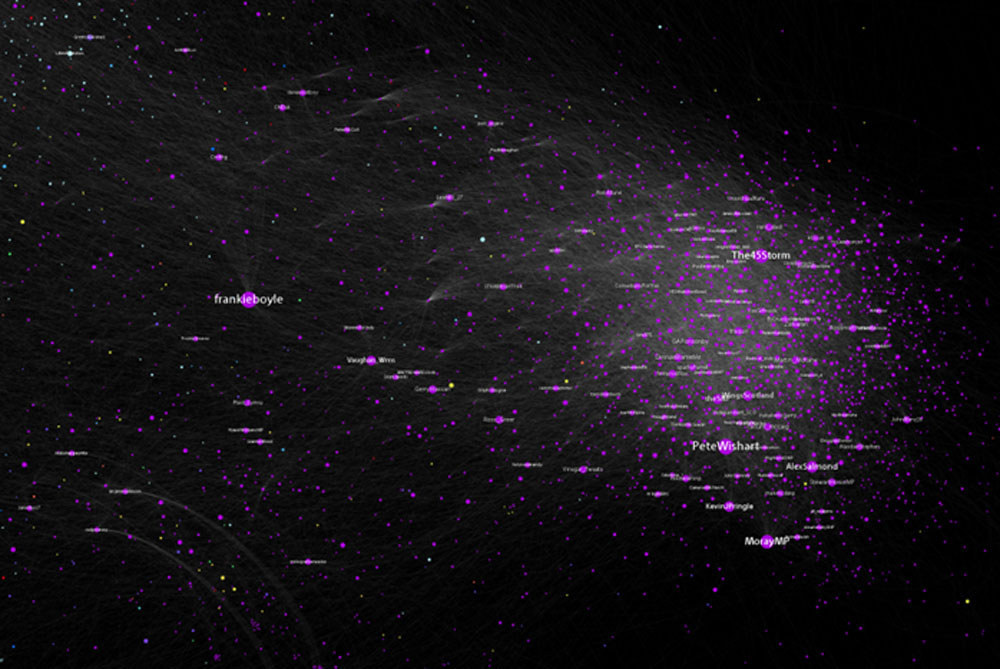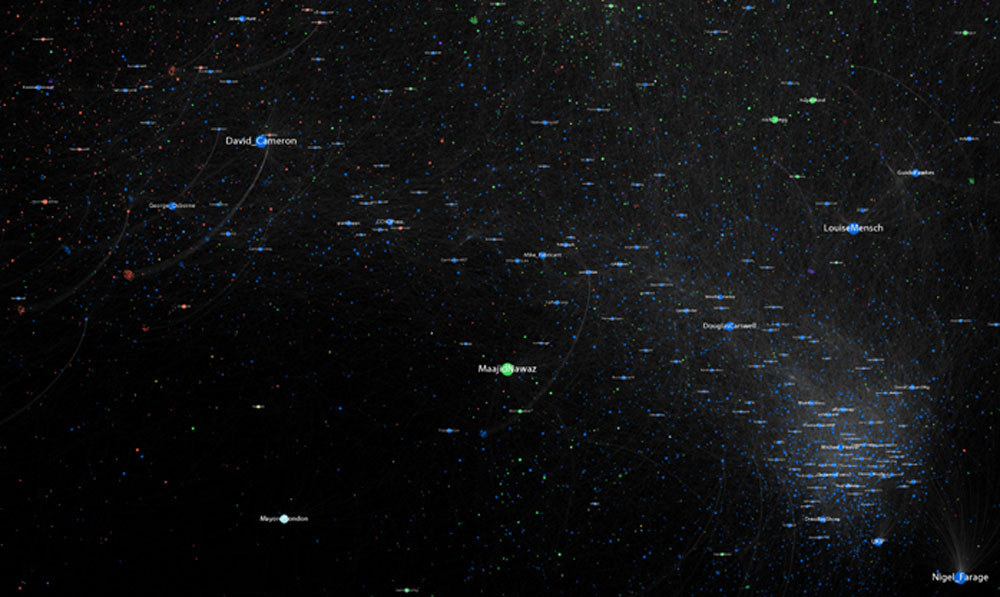This is the Westminster galaxy.

It's a computer model of British political Twitter, based on 1.5 million tweets by or about MPs.
Our research group gathered every such tweet over the last two months, then used the 685,000 retweets to create a map – clusters of Twitter user connected by who is retweeting and mentioning whom.
Each of these tiny stars is a Twitter user – and this map shows who they're listening and talking to.

The dots (or stars) are Twitter users: politicians, voters, newspapers, Frankie Boyle. The lines between them are retweets. The larger the dot, the more that user has been retweeted.
We then used a clustering algorithm to look through all our tweeters and group them based on who they are retweeting, and who they are being retweeted by. As you would expect, this can be loosely correlated to bigger groups: parties, countries and shared ideologies.
Finally, the dots are positioned in our Twitter galaxy based on who they are retweeting. Think of it a bit like gravity: somebody who is retweeting Nick Clegg and other Lib Dems a lot will be drawn closer to them. Someone who is retweeting both Tory and Labour MPs will sit somewhere between the two clusters, a lonely star caught between the red and blue constellations.
But what does this tell us about British politics – or at least, British politics on Twitter?
First, the we can see that most of British Twitter users are squarely in the political mainstream: this is the huge cluster of points that dominate the map.
Right at the heart of the map sit the media outlets, who are retweeting all the parties. We can see the left and right divide quite clearly: Labour and the Greens have pulled together towards the top of the space, while the Tories, their Lib Dem bedfellows and UKIP have clustered at the bottom.

But there are also outliers, who only really talk to themselves.
The most obvious group are George Galloway's supporters. This isn't surprising: Galloway has a massive Twitter following, many of whom don't necessarily engage with mainstream UK politics. That's partly because their focus is on the international issues on which Galloway is outspoken – which explains why the Galloway Quadrant floats out on the galactic periphery.

Scottish political chatter is also quite separate.
Scottish politicians and the Scottish electorate talk to one another, presumably about issues local to Scotland. The same goes for Northern Ireland. But Wales doesn't appear as a distinct cluster.
Interestingly, the SNP MP Pete Wishart is at the centre of the Scottish cluster, while Jim Murphy, the new Scottish Labour leader, is nowhere to be seen – he is still much closer to the Labour mainstream.

There is also – as you'd expect – something of an overlap between the Tories and UKIP.
Douglas Carswell – a Tory defector – floats in the no man's land between the two parties' constellations. He is surrounded by some of Twitter's more prominent libertarians: Ranty_Man, LordSkipVC, Old Holborn and the Telegraph blogger Tim Stanley.

Another big lesson is that parties tend to follow their leaders.
The Conservative Twitter accounts orbit David Cameron; the Labour accounts orbit Ed Miliband and so on. Cabinet members similarly cluster around their leaders, retweeting their every announcement, while backbenchers tend to float around the edges.
But there are some other MPs' placements are more interesting. Boris Johnson – London Mayor, PPC and possible heir to the Tory throne – is a bright, lonely light in the outer reaches of the Right-wing space. Why isn't he being retweeted by the Tories? Why aren't they pulling him into their constellation?

In fact, the map throws up endless surprises.
Who would have guessed that Amina Lone, PPC for Morecambe and Lunesdale, was so important a connecting point for the Labour conversation – as bright a star in the Twitter galaxy as Ed Miliband himself?
If you're interested in learning more, why not visit our website and explore the full map for yourself?
Alex Krasodomski-Jones is a researcher at the Centre for the Analysis of Social Media (CASM), which is based at the think-thank Demos. Ali Fisher is director of Mappa Mundi Consulting and an independent public diplomacy strategist and researcher.
